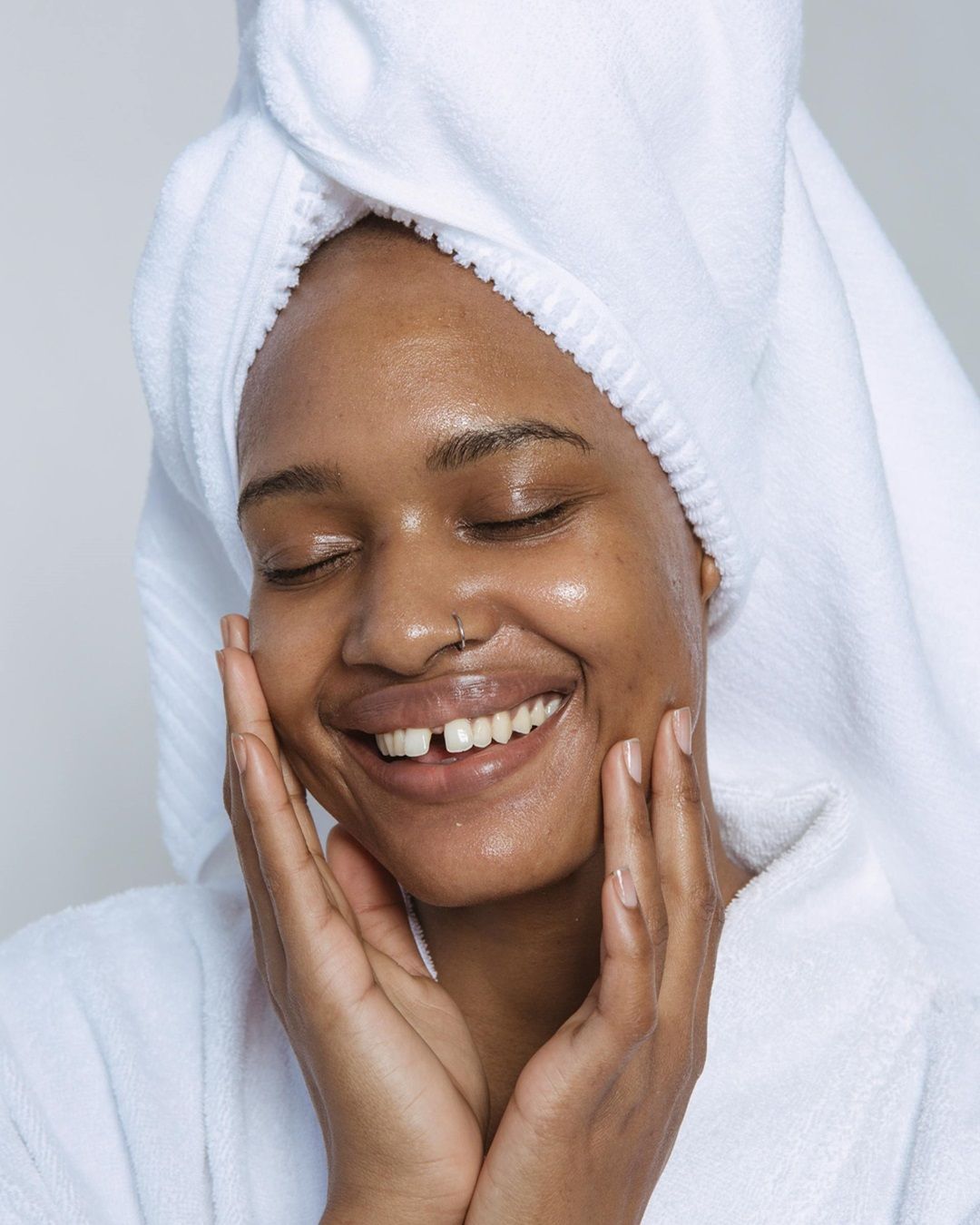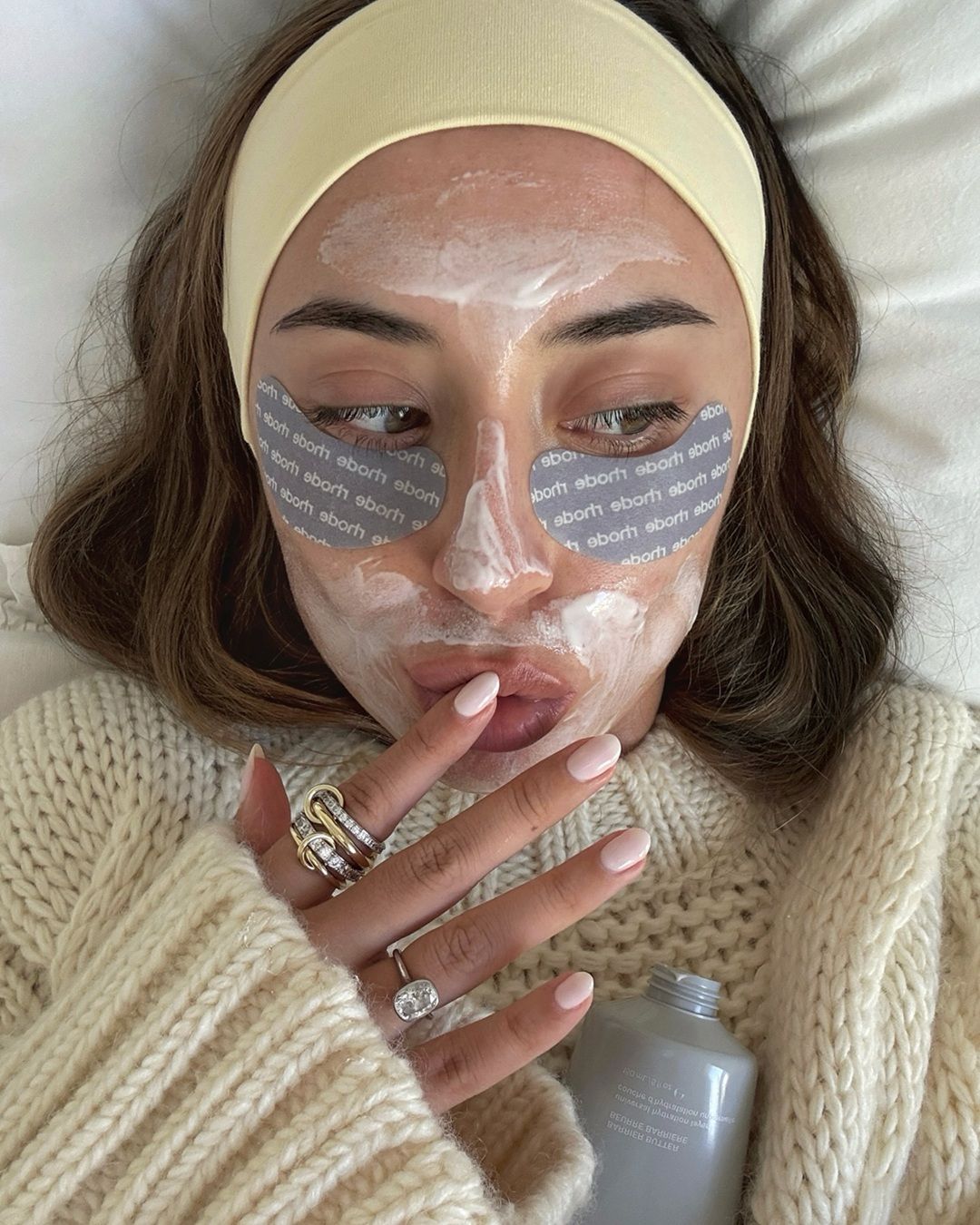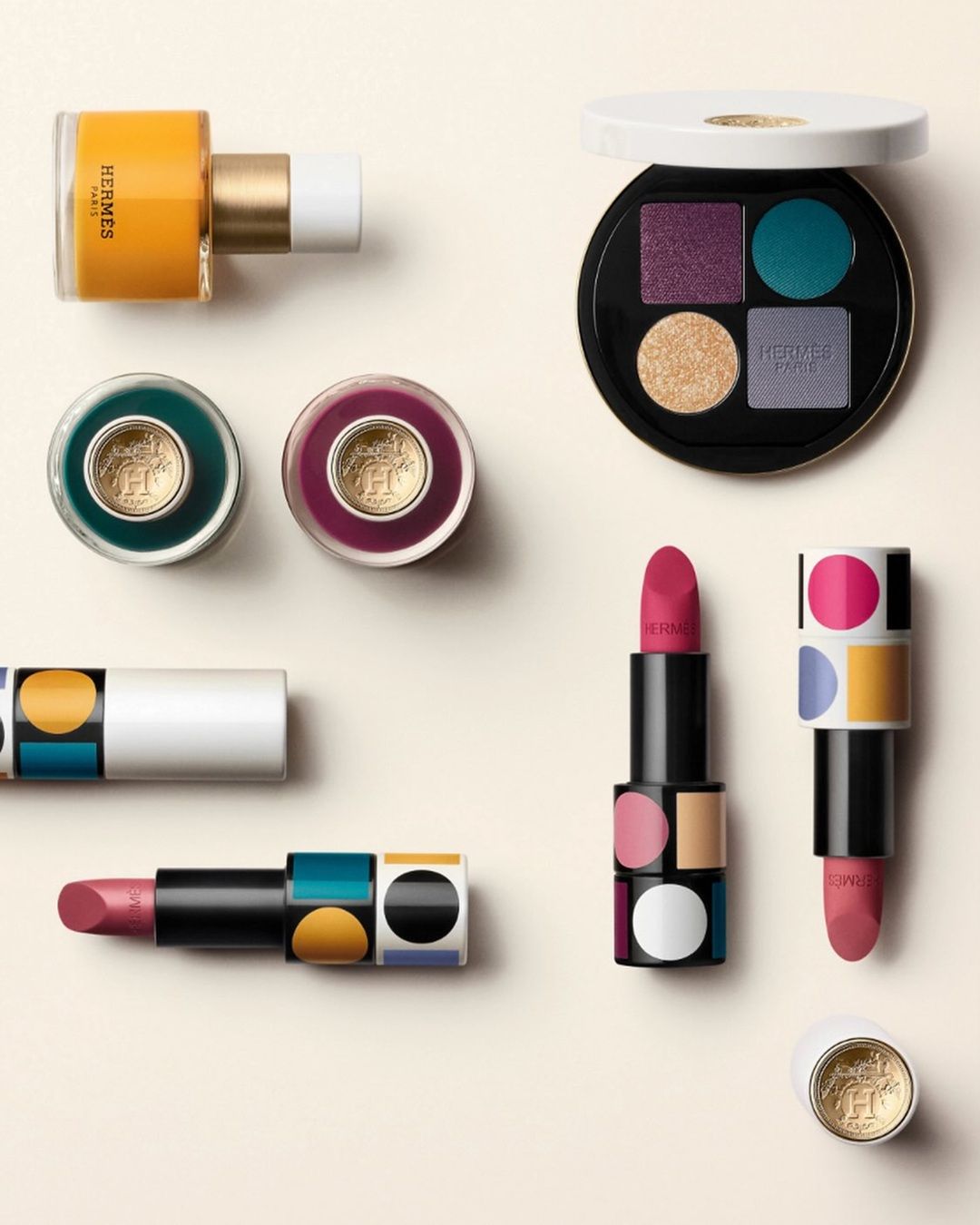
We have declared war on period face The menstrual cycle affects the behavior of our skin: here's how to remedy it
Despite affecting a woman (as well as trans men and non-binary individuals) on average for 2,535 days of her life, menstruation is still a taboo. Something to be experienced privately and silently, only to be addressed publicly in an advertisement where girls climb Everest barefoot while a storm rages, or as an unfortunate joke to explain any female universe discomforts. It's not surprising that according to a recent study, 61% of Italian girls between the ages of 12 and 19 experience their cycle with extreme discomfort. We don't talk about it, we hide our expensive pads, we wish to disappear when a drop of blood inadvertently stains our pants, and rather than going to the gynecologist, we prefer to suffer in the fetal position while dreaming of moving to Spain where paid leave forpainful menstruation is a right.
Once a month, our breasts ache and our bellies swell. Yet, many of us, just to avoid the social embarrassment of touching the subject, don't even ask why the body reacts that way. We just endure. But knowledge is power: knowing what happens in our uterus, in our ovaries, and how this process affects other parts can help us better manage the cycle and even normalize it. Let's start with the effect menstruation has on the skin.
What is the period face
The skin, especially that of the face, undergoes various transformations depending on the specific phase of the menstrual cycle. From elastic and radiant, it becomes oily and pimples appear, and finally, it becomes dehydrated and tends to irritate. You know when during the post-ovulatory phase stressed skin increases sebum production, pores get clogged causing enlarged ones, pimples and blackheads, the face seems puffier due to fluid retention? Add to that the dull complexion, a suffering expression from cramps, dark circles from tiredness, and you'll have what they call period face on TikTok.
@theendospectrum Period face is normal…but its not fun stitch this with uour period face and start normalising the bloat #facialbloating #periodface #waterretention #periodbloat #periodtips #moonface original sound - Endometriosis | Endo Spectrum
The phases of the cycle determine the appearance of our skin
Although there is no scientific evidence supporting the period face, it is true that hormones exert immense power over the skin and an imbalance can make it extremely dry or excessively oily, causing imperfections like acne. So, just as hormones directly influence our overall energy, they can alter the mood of our skin during the three phases of the menstrual cycle: the follicular phase, the luteal phase, and the menstrual phase. The follicular phase begins when menstruation ends and extends until ovulation. This is when our skin looks its best thanks to high estrogen levels that increase the production of hyaluronic acid and promote collagen synthesis. The result is much more elastic and luminous skin. The luteal phase, also known as the premenstrual phase, begins after ovulation and lasts until the start of menstrual bleeding. During these days, there is a progressive decrease in estrogen, in favor of testosterone and progesterone, which stimulates increased sebum production, leading to oily skin, clogged pores, and inflammatory acne that develops especially in the lower part of the face (chin, jawline, cheeks). Finally, in the menstrual phase, we can expect dryness and inflammation. Progesterone and estrogen levels result in reduced sebum production, low function of the skin barrier, and moisture retention, causing the skin to be dry, tense, or dehydrated.
Adjusting skincare according to the cycle
In case of skin or cycle-related issues, it's always best to consult a professional, such as a gynecologist or dermatologist. However, knowing and recognizing the changes our skin undergoes during the cycle can help us create a targeted strategy and update skincare according to the phase we're in. Let's see how.
- Follicular phase: the skin is in balance and appears in its best condition. We can return to our normal daily skincare routine. All we need to do is maintain hydration with products rich in hyaluronic acid or polyglutamic acid, encourage collagen synthesis by incorporating creams or serums with peptides, and maintain natural luminosity with active ingredients like vitamin C.
-
Luteal phase: to counter possible inflammations and control sebum production, it can be a good idea to increase cell turnover and exfoliate the skin with AHAs and BHAs, or using azelaic acid, purify with specific masks, and use light and sebum-regulating creams, preferably containing niacinamide.
- Menstrual phase: in this phase, we should focus on hydration and the health of the skin barrier, resorting to hyaluronic acid in the form of masks, serum, and cream, but also ceramides and panthenol. It's better to avoid exfoliants and overly aggressive products, opting for something soothing, like centella asiatica, chamomile, or aloe vera, which will help reduce any redness.
























































